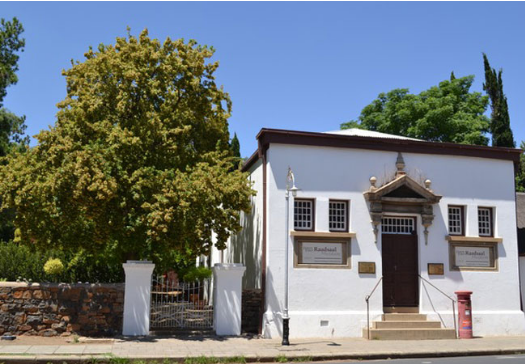
The first Raadsaal is probably the most important Historical Building in the Free State, dating back to 1849, it is the oldest building left standing in Bloemfontein. It is an extension of the National Museum and functions to tell the fascinating story of the Free State and its establishment. It is a relatively humble structure with long whitewashed walls and a thatch roof terminated by end gables.
In November 1848, Maj Henry Warden sold a number of erven in Bloemfontein, raising for the Government a sum of £900 and, at his request, was allowed to use half of this money to build a Church and a School for the local community. The result was a large building which was reportedly "nothing very handsome, but good, strong, plain work". Initially it was used as a Church and, for a time, services were conducted there by Dr Andrew Murray until 29 May 1852 when a Dutch Reformed Church was completed. The building also served as a Council Chamber for the Legislative Assembly of the Orange River Sovereignty, who held its sessions there from 1849-1852. The Town's Board of Commissioners also used it for its monthly meetings. The stormy negotiations that must have proceeded the abolition of the Sovereignty must also centred here. Following the establishment of the Republic of the Orange Free State in 1854, the hall continued to serve as the Legislative Assembly Chamber, as Government Offices, and as a School, and the Republic's first two presidents, Josias Hoffman and Jacobus Boshoff, were sworn in here in 1854 and 1855 respectively. In 1856 the Volksraad and Executive Committee moved to a new building, and the old structure continued to be used as a School. In 1877 the building was placed at the disposal of a public committee for use as a Museum. The two stone wings were added in 1885 and 1891 respectively. It was declared a National Monument under old NMC legislation on 6 April 1936.